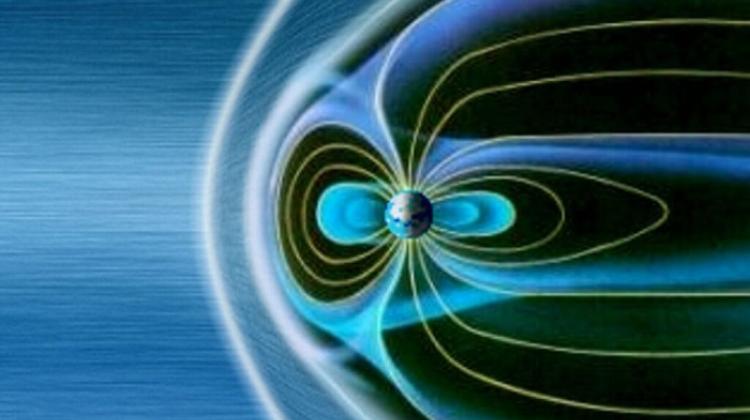Modern accelerators might not see particles of the "new physics"
 For 80 million hours of computational cores operation, the Kraków supercomputer Prometheus tracked the 'new physics' tracks in the GAMBIT project, confronting the predictions of several supersymmetry models with data collected by the most sophisticated contemporary scientific experiments. Source: Cyfronet, AGH
For 80 million hours of computational cores operation, the Kraków supercomputer Prometheus tracked the 'new physics' tracks in the GAMBIT project, confronting the predictions of several supersymmetry models with data collected by the most sophisticated contemporary scientific experiments. Source: Cyfronet, AGH
Elementary particles of the "new physics" must be so massive that their detection in the LHC, the largest modern accelerator, will not be possible - this is the conclusion from the analyses of the international GAMBIT project, in which the Institute of Nuclear Physics PAS in Kraków participates.
This not very optimistic conclusion comes from the most comprehensive review of observational data from many scientific experiments and their confrontation with several popular varieties of the supersymmetry theory. Complicated, computationally extremely demanding analysis was carried out by the team of the international project GAMBIT - and left a shadow of hope.
If there are supersymmetric particles predicted by the studied theoretical models, they must have masses of many teraelectronvolts - suggest the results of analyses carried out as part of the GAMBIT project, reported in the press release of the Institute of Nuclear Physics of the Polish Academy of Sciences in Kraków. In practice, this means that observing such particles in the LHC will be either very difficult or even impossible.
Researchers working on the GAMBIT project have created a set of software tools that allow for a comprehensive analysis of data collected during the most sophisticated contemporary experiments and measurements. The first results of their research have just been published in the European Physical Journal C. The Institute of Nuclear Physics PAS participates in the team\'s work.
In all of this, however, there is a shadow of hope - the Institute of Nuclear Physics PAS reassures in the release. A few supersymmetric particles - known as neutralino, chargino, stau and stop - have large masses, but they do not exceed one teraelectronvolt. Their detection at the LHC - with some luck - is possible. Unfortunately, in this group only neutralino is considered a potential dark matter candidate.
The international project GAMBIT (Global and Modular Beyond-the-Standard-Model Inference Tool) is looking for the answer to the question whether modern instruments allow to see elementary particles of the "new physics" that could explain such mysterious features of our reality as the nature of dark matter or lack of symmetry between matter and antimatter.
Physicists-theoreticians today are firmly convinced that the Standard Model - that is our current, thoroughly verified theory of the structure of matter - needs to be expanded. A strong premise for the existence of unknown elementary particles are, among other things, star movements in galaxies. Polish astronomer Marian Kowalski was the first to investigate the statistical characteristics of these movements. In 1859 he discovered that movements of stars close to us could not be explained by the movement of the Sun alone - this was the first indication suggesting the rotation of the Milky Way. In turn, in 1933, Fritz Zwicky from Switzerland deduced from the observation of stars in the Coma cluster of galaxies that they move around galactic centres as if there were a large amount of invisible matter there.
Although almost a century has passed since Zwicky\'s discovery, it has not been possible to study the composition of dark matter yet - or even confirm its existence beyond doubt. During that time, theoreticians constructed many extensions of the Standard Model containing more or less exotic particles - dark matter candidates. The family of supersymmetric theories is popular, for example. In these theories, new, very massive counterparts of known particles weakly interacting with ordinary matter are responsible for the existence of dark matter.
Naturally, many groups of experimental physicists are looking for the traces of the "new physics". Each of them, based on theoretical assumptions, implements a certain research project, and then analyses and interprets the resulting data. This is almost always done in the context of one, usually quite narrow branch of physics.
"The idea behind the GAMBIT project is to create tools for analysing data from as many experiments as possible, from different areas of physics, and to compare them very thoroughly with the predictions of new theories" - explained Dr. Marcin Chrząszcz from the Institute of Nuclear Physics PAS, quoted in the press release. "Looking comprehensively, we can significantly narrow down the search areas of +new physics+, and over time also eliminate those models whose predictions have not found confirmation in the measurements" - he added.
The idea to build a set of modular software tools for the global analysis of observational data from various physical experiments was born in 2012 at the international scientific conference in Melbourne. Currently, the GAMBIT group includes more than 30 researchers, including scientists from Australia, France, Poland, the United States and Sweden. Dr. Chrząszcz, financed by the SONATA grant of the National Science Centre, joined the GAMBIT team three years ago. He works on tools that model the physics of massive quarks, with special emphasis on bottom quarks, also known as the beauty quarks.
How are the proposals of new physics verified in the GAMBIT project? Scientists choose the theoretical model and build it into software. The program then scans the values of the main model parameters. For each set of parameters, predictions are calculated and compared to the data from the experiments.
"In practice, nothing is trivial here" - emphasised Dr. Chrząszcz. "There are models, in which we have as many as 128 free parameters. Imagine scanning variants in 128-dimensional space. This is something that will kill every computer, which is why we limited ourselves to three versions of simpler supersymmetry models, known as CMSSM, NUHM1 and NUHM2 They have five, six and seven free parameters respectively, but things get complicated anyway, because, for example, some of the fixed parameters are known only with some accuracy. So they have to be treated as free parameters, just ones that change to a smaller extent" - said the scientist.
The calculations of the GAMBIT project were carried out on the supercomputer Prometheus, one of the few dozens of the fastest computers in the world. The machine, working at the Academic Computer Centre Cyfronet of the AGH University of Science and Technology in Kraków, has processors with over 53,000 cores and a total computing power of 2,399 teraflops (one million million floating-point operations per second). Despite the use of such a powerful equipment, the total working time of the cores in the GAMBIT project amounted to 80 million hours - over 9100 years.
"Such long calculations result from the diversity of measurement data" - explained Dr. Chrząszcz. Groups from the main experiments at the LHC accelerator publish exactly the results that the detectors have measured. "But every detector distorts what it sees in some way. Before we compare the data with the predictions of the model being verified, the distortions introduced by the detector must be removed". The scientist added that a similar procedure must be carried out on the astrophysics side.
The codes of all GAMBIT modules are publicly available on the project website and can be quickly adapted for the analysis of new theoretical models. Researchers from the GAMBIT project hope that the open code will speed up the search for the "new physics".
PAP - Science in Poland
kflo/ ekr/ kap/
tr. RL
Przed dodaniem komentarza prosimy o zapoznanie z Regulaminem forum serwisu Nauka w Polsce.


















